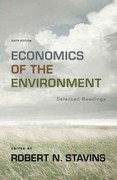Question
Microeconomics questions answer them well.the questions below are complete (ii) the profit signature per policy sold if Sterling reserves are zeroised. (c) The office now
Microeconomics questions answer them well.the questions below are complete
(ii) the profit signature per policy sold if Sterling reserves are zeroised.
(c) The office now wishes to make an allowance for surrenders. It assumes that, at the end
of the first and the second policy years, 3% of the surviving policyholders will surrender (just
before payment of the second and third annual premiums respectively.) Surrender values are
equal to the value of the policyholder's units (after deduction of fund management charges),
with a surrender penalty of 10. Calculate
(i) the revised profit signature per policy sold, ignoring any need to maintain Sterling Reserves
at the end of each year,
(ii) the revised profit signature per policy sold if the Sterling Reserves are zeroised, and
(iii) the net present value, at a risk discount rate of 15% per annum, of the revised profit
signature per policy sold, assuming that the Sterling Reserves are zeroised.
(a) If a profit test for a unit-linked policy reveals negative cash flows in the second or any
subsequent policy year, it is customary to eliminate these negative values by setting up sterling
reserves at the end of each year.
Describe briefly the technique ("zeroisation") by which these reserves are calculated.
(b) An office issues a 3-year unit-linked policy with a yearly premium of 500. The death
benefit, payable at the end of the year of death, is 1,000 or the bid value of units if greater.
The maturity value is the bid value of the units at maturity.
95% of each premium is invested in units at the offer price. The bid price of units is 95% of
the offer price. Management charges of 1
4% of the bid value of the units are deducted at the
end of each year (before payment of death and maturity claims).
The office expects to incur expenses of 75 at the start of the first year and 25 at the start
of each subsequent year.
Using a profit testing analysis, calculate for a life aged 60 at entry
(i) the expected profit in each of the 3 years per policy in force at the beginning of the year,
(ii) the net present value at the issue date of the expected profit from one policy assuming a
risk discount rate of 10% per annum.
Assume that the unit fund grows at 8% per annum (before deduction of management charges),
that sterling reserves need not be maintained at the end of each year, and that the possibility
of surrender may be ignored. The mortality of policyholders follows A1967-70 ultimate and
sterling reserves earn interest at 6% per annum during each policy year.
If a profit test for a unit-linked policy reveals negative cash flows in the second or any subsequent policy year, it is customary to eliminate these negative values by setting up sterling
reserves at the end of each year.
Calculate the sterling reserves required at the end of each policy year, per policy then in force,
for a 3- year policy for which the profit signature (with no allowance for sterling reserves at
the end of each year) is (250, - 100, - 50), given that the rate of mortality is 0.01 per annum
at each age and sterling reserves earn interest at 8% p.a.
An office issues a unit-linked endowment assurance with annual premium 400 and term five
years to a life aged 60 who is subject to A1967-70 ultimate mortality.
The sum assured, payable at the end of year of death or at the maturity date, is the bid value
of the units held, subject to a guaranteed minimum death benefit of 2,000. The allocation
proportion is 70% for the first annual premium and 98% for all subsequent annual premiums.
For units the bid/offer spread is 5% and the annual rate of management charge is 0.75%.
In determining the sterling reserves necessary for the policy the office makes the following

Step by Step Solution
There are 3 Steps involved in it
Step: 1

Get Instant Access to Expert-Tailored Solutions
See step-by-step solutions with expert insights and AI powered tools for academic success
Step: 2

Step: 3

Ace Your Homework with AI
Get the answers you need in no time with our AI-driven, step-by-step assistance
Get Started


